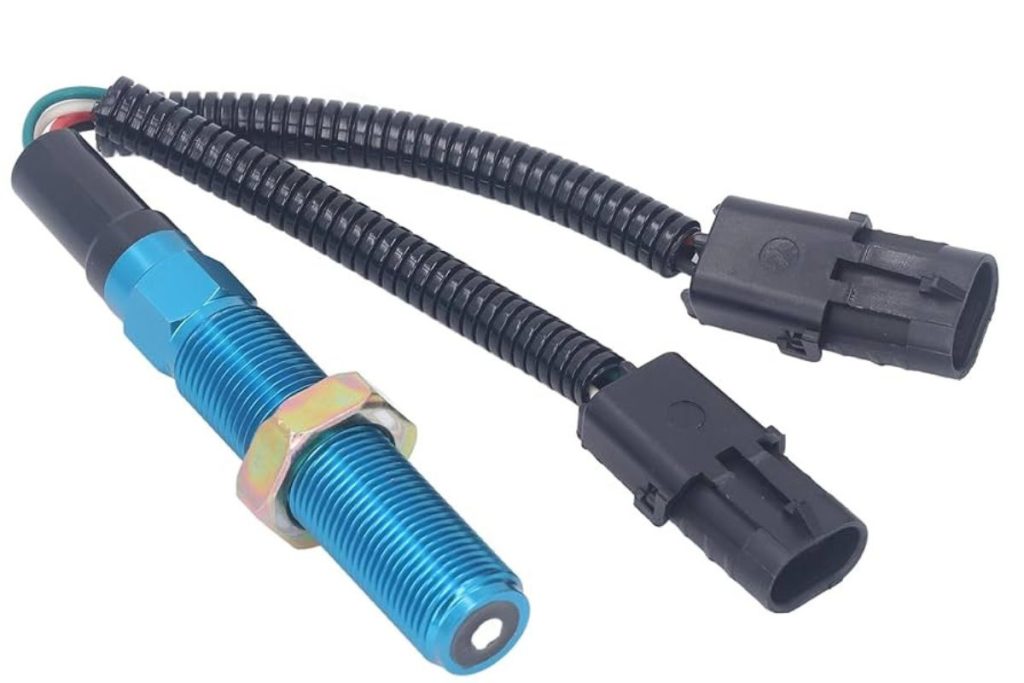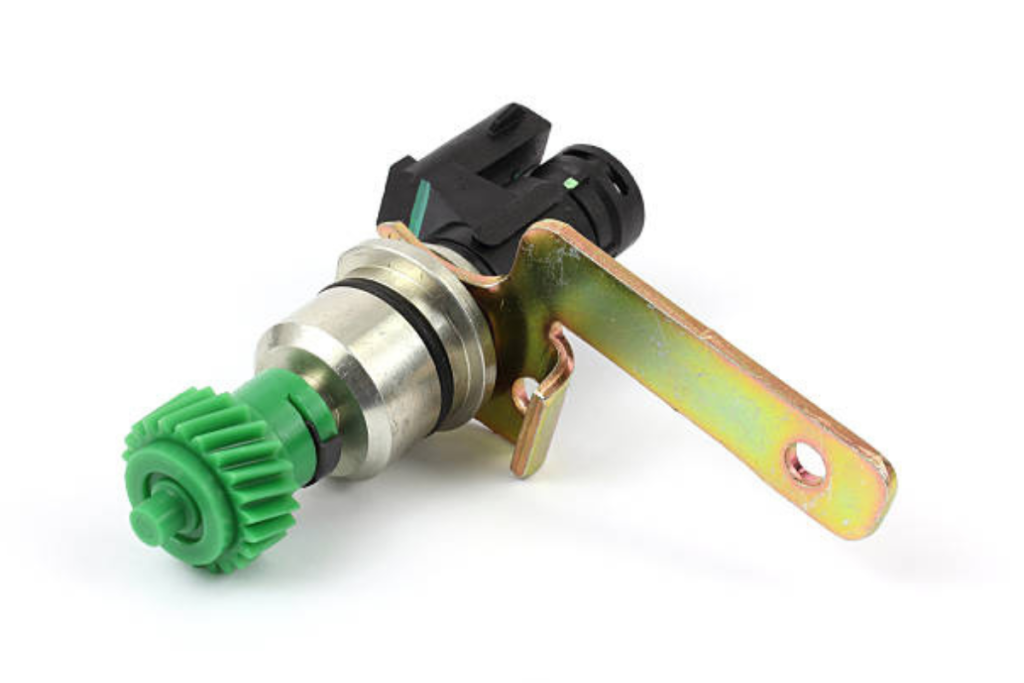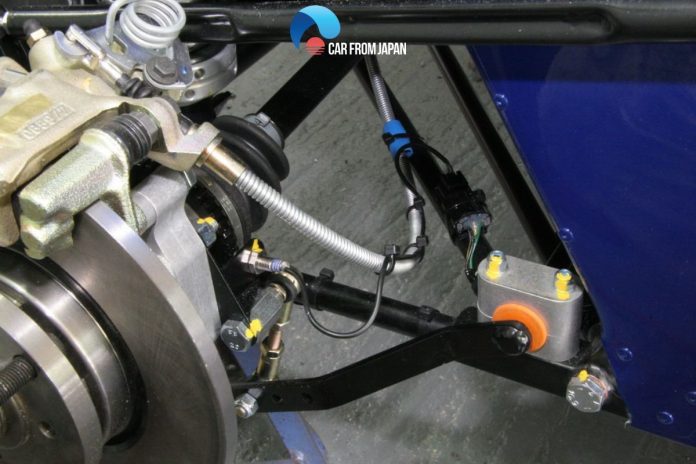Is your car suddenly stalling, misfiring, or acting completely confused? You might see your Check Engine Light turn on, but the cause isn’t always obvious. Often, these strange problems can be traced back to a tiny part called the engine speed sensor (a vehicle speed sensor). Here is how to know if this small sensor is causing big trouble.
Contents
What Does A Speed Sensor Do In Your Car?
Before going far, let’s find out about the function of an engine speed sensor. A speed sensor is a device in the engine management system that measures the vehicle’s current velocity.
The mechanism of this sensor is monitoring the rotation of the crankshaft which is responsible for turning the engine’s piston and generating the power.
After that, it will send the signal to the car’s engine control unit (ECU) which processes the information to make the decision about the engine’s speed and position.
Specifically, the ECU will determine how much fuel will be injected into your cylinders to reach maximum performance.
We can see that the speed sensor plays a critical role in the engine system, it helps your engine run smoothly and efficiently, besides, it also could help to diagnose and troubleshoot when the car engine has any problem.
As issues with the speed sensor, it will cause a range of symptoms that you can easily observe visually.

Most Common Signs of Engine Speed Sensor Problems
A defective car speed sensor symptoms may cause different problems. The symptoms of a bad transmission speed sensor are the same as some other engine problems, like a bad throttle position sensor or faulty coil pack.
Below is a list of some of the most common signs of a defective engine speed sensor gathered by Car From Japan‘s car bloggers.
Harsh or improper shifting
When there are symptoms of a bad transmission speed sensor – is also known as an output of the speed sensor. It is an important component in a vehicle’s transmission system.
It measures the rotational speed of the output shaft and sends this information to the vehicle’s computer or transmission control module.
If the transmission speed sensor is not working properly, it can cause a range of problems with the vehicle’s transmission system.
At that time, the powertrain control module could not control the shifting of gears within the transmission properly. This may cause transmission revs high before shifting gear or leading to late transmission overdrive and inability to go into that top gear.
Harsh shifting may damage internal components such as valve bodies, hydraulic lines, and even mechanical gears in some cases.
Inactive cruise control
The transmission speed sensor does not only control the input and output shaft speed, meanwhile, it also plays a role in monitoring the cruise control.
As we know, the speed sensor provides information to the cruise control system about the vehicle’s speed, and if it is not working correctly, the system may not be able to maintain a consistent speed.
When there are some engine speed sensor problems, an error code will be sent to the car’s Engine Control Unit (ECU).
Then the cruise control will be shut down and does not engage when you press the button. The speedometer also may work frantically or sometimes stop working altogether.

Check engine light comes on
The Check Engine light is an error signal for the engine system, including the speed sensor.
Meanwhile, the ECM directly receives information from the sensor, processes it, and sends it back to control the operation of the brake system and engine system.
When the ECU detects that information is mistaken from the normal one or there is no signal, the Check Engine Light will immediately light up the light to notify drivers.
Then the check engine light comes on sporadically and intermittently when accelerating. The overdrive light also may go ‘On’ or ‘Off’ for no apparent reason.
At this time, drivers should give the vehicle to the repair center to fix it to avoid serious danger. In particular, the case of the Check Engine light flashing continuously is an emergency warning that the engine is having serious problems and needs urgent fixing.
If it is not possible to immediately repair, the driver should only move at a maximum speed of 40km/h to avoid danger.
If you notice any of the above-mentioned symptoms, you should have your car checked at a nearby auto repair shop.
While the problems may be transmission-related, run a complete computer diagnostic test at a repair shop, instead of directly taking your car to a specialty shop.
Watch this video to learn more about the symptoms of a bad engine speed sensor!
Final Thoughts
In the end, the engine speed sensor is a small part with a very big job. If you notice your speedometer acting strange, cruise control not working, or rough shifting, the vehicle speed sensor is likely the problem. Recognizing these simple signs is the key to a quick fix. Luckily, once you replace the sensor, your car will be running smoothly and shifting correctly again.




Thank you CAR FROM JAPAN for your great lessons, however i have a question for you,do all cars have speed sensors?
Good replies in return of this query with solid arguments and describing the whole thing about that.
Thank you for the good writeup. It if truth be told was once
a enjoyment account it. Look complicated to more brought agreeable from you!
However, how could we be in contact?
U can click here to see our fanpage : https://www.facebook.com/CarFromJapan.Official/
Thanks for the great knowledge. Please help, my car after a cold night, starts well then it starts to behave as if it has a miss even at idle power and at times ot shows the check engine indication, which suddenly disappears. Later on it picks and runs well. What could be the problem?
Thank you for contacting Car From Japan. However, we cannot answer your problem because there is many things we need to see at your car. I suggest you to bring the car to a local mechanical shop o solve your problem.
What makes incomplete revs in a modern diesel engine especially Toyota hiace this problem has become disaster to most engineers in Kenya
Thank you for sharing your opinion. Many people will agree with you too.
An intriguing discussion is definitely worth comment. There’s no
doubt that that you ought to write more on this topic, it may not
be a taboo subject but usually people do not discuss such subjects.
To the next! Many thanks!!
We are happy to receive your comments. Please share with your friends so they can enjoy this article, too.
How does someone know that the idling sensor is defective, signs and symptoms.
Good way of describing, and good article to get information about my presentation subject matter, which i am going to deliver in college.
We are happy to receive your comments. Please share with your friends so they can enjoy this article, too.
My speedometer stopped working. The speed sensor was replaced. Problem persisted . They stated a bad gear and needed to have the transmission replaced. I need the car to last 18-24 months and I drive 100 miles per week on secondary roads. I was going to use a speedometer app and really am asking is it safe to drive without replacing the transmission ?
I do have a rav4 and gaia with tha same engine in borh of it, and they both had the same issue such as cranks okay and fuel together with the ignition but still not starts.
My car some times The speedometer stops working, the gear jumps and then get back driving again.but the speedometer and odometer will not work untill the car is shutdown for a while.
Speed sensor combined with power steering?
My Mazda 6 2003 model gives a error code that the speed sensor is faulty…I have replaced it…what happens now is that it works perfectly , but after 60-70 km the same error occurs and it goes into safety mode…What can the problem be ?
My Mazda 6 2003 model gives a error code that the speed sensor is faulty…I have replaced it…what happens now is that it works perfectly , but after 60-70 km the same problem occur and it goes into safety mode…What can the problem be ?
Hi Car From Japan,
I recently have a similar symptoms and manage to fix the new sensor..but now the problems is there is an oil leaking at the sensor..should I apply a gum to the connection area?